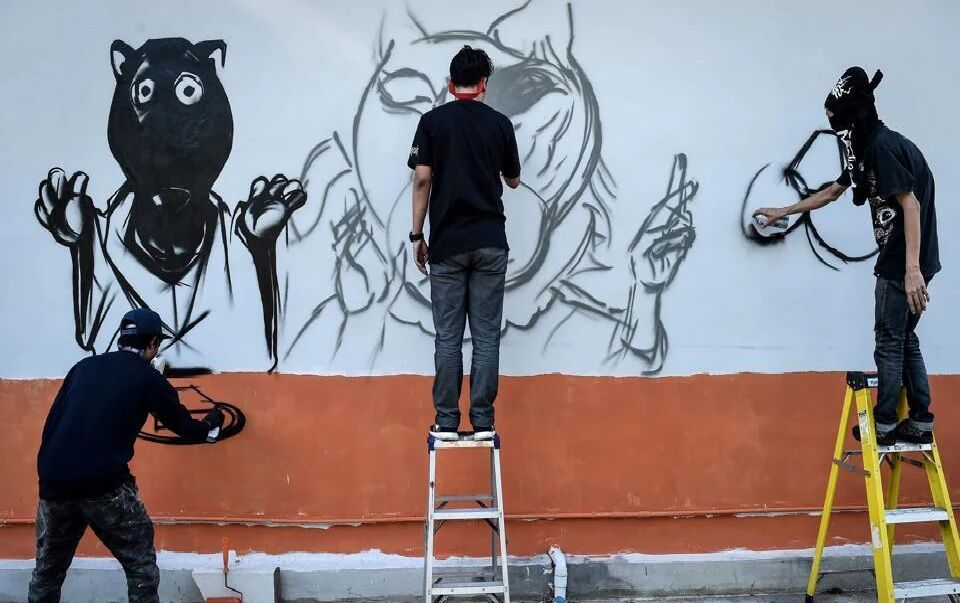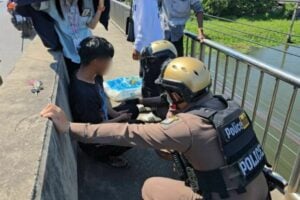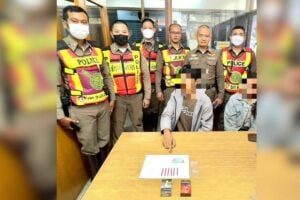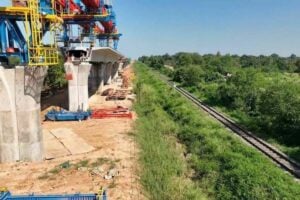Unravelling the Environmental Repercussions of Thai Graffiti

When you think of environmental concerns, Thai graffiti might not be the first thing that springs to mind. But delve deeper into Thailand’s vibrant street art scene, and you’ll discover a unique intersection of creativity and sustainability.
At the heart of this movement is a philosophy that’s not just about creating, but about making responsibly. From eco-friendly art practices to workshops diving into environmental issues, the Thai graffiti scene is a hotbed of innovative ideas and unique perspectives.
But it’s not all smooth sailing. Despite efforts to crack down on vandalism and defacement of public property, the challenges persist. Yet, amidst these hurdles, the resilient spirit of Thai graffiti artists continues to shine, pushing the boundaries of what street art can achieve.
Environmental concerns of Thai graffiti
Stepping into the vibrant world of Thai graffiti, a unique blend of creativity and environmental responsibility takes centre stage. You’ll soon find that initiatives such as Fabcafe’s philosophy genuinely capture the essence of this vision. They emphasise that graffiti isn’t only about making a colourful artistic statement; it’s also about doing so responsibly.

From hosting farmer’s markets to initiating graffiti-focused workshops, the efforts are all-encompassing. Each activity brings to light key environmental issues without compromising on the inherent joy of creation.
Interestingly, it’s not just the Bangkok cityscape that’s seen a striking infusion of eco-friendly graffiti. Moving a bit further afield and delving deeper into the thriving art scene in the heart of Samut Prakan province, you’ll unearth another sustainable jewel – the Thailand Creative & Design Center (TCDC). Established as a non-profit organisation, the TCDC takes on the noble mission of nurturing Thailand’s creative industries.
At the same time, the Thai Graffiti scene also battles growing concerns about vandalism. The city of Pattaya, for instance, is amid a crackdown on vandalism. Despite these intentions, however, results have been less than stellar. A consideration of this paints a comprehensive picture of the situation – showing that it’s not all just about promoting eco-awareness and responsible creation, but there’s also a battle against disruptive activities that can tarnish the essence of this artistic expression.
Moreover, instances of political graffiti offer a showcase of the complex relationship between free expression, legal restrictions, and respect for public and private property. On one side, you have artists using graffiti as a medium to voice personal struggles or political dissent; on the other, law enforcement personnel grappling with responding to these occurrences.
In all its multiplicity, Thai Graffiti is emblematic of a greater dialogue on art, expression, sustainability and respect for public spaces. This dialogue endures and will continue to evolve – shaping the outlook on Thai graffiti and its environmental concerns moving forward.
Historical context
Digging into the roots of any art form brilliantly derives an understanding of its evolution. Thai graffiti, a prevailing artistic expression in the urban landscape, certainly isn’t an exception. The journey of Thai street art is not just about hasty scribbles on public walls—it’s interwoven with rich traditional Thai art influences and tourism impacts.
Influence of traditional Thai art
Let’s familiarise you with a historical concept from art known as Vanitas. Originating in the 16th and 17th centuries, particularly in Dutch and Flemish painting, the word ‘Vanitas’ is derived from Latin, symbolising ‘vanity’. Crafted intricately, Vanita’s artworks serve as clear reminders of life’s fleeting nature, the inevitability of death, and the transient nature of material possessions. Although it originated within a specific past context, the underlying themes of Vanitas continue to reverberate in today’s world, encouraging contemplation on the pursuit of ephemeral worldly pleasures.

Embedding that Vanitas influence, Thai graffiti beautifully captures and extends these themes. As observed in the artwork showcased at the 2020 exhibition Monument of Hope held at Bangkok CITYCITY Gallery, Thai graffiti has gone beyond traditional boundaries, subtly reflecting on global concerns like the ongoing pandemic.
Impact on tourism
While graffiti in Thailand is expressive, vibrant, and full of life, not all publicly displayed scribbles get the same appreciation. Places like Pattaya are still combating the rampant issue of vandalism and unsolicited advertisements that are tarnishing the cityscape and public properties. The city officials’ inability to control vandalism and graffiti miscreants continues to undermine the potential of such freely accessible art forms to enhance the city’s appeal.
Despite various crackdown measures promised by city authorities, there seems to be a lag in their implementation. Public properties like electrical transformer cabinets around Pattaya are continually being defaced by graffiti and plastered with advertisements, impacting the visual appeal of urban landscapes.
Interestingly, this is a compelling story of counterpoints, where graffiti art is equally disparaged and celebrated. Thailand’s graffiti art scene walks this tightrope, attracting global tourists on the one hand, while facing scrutiny and challenges from local authorities on the other.
Environmental impact
The environmental impact of graffiti reaches far beyond the wall. Urban street art, if not performed mindfully, can contribute to the degradation of our cities’ ecosystems. It’s not just about defacing buildings; it’s also about the possible harm caused to the environment.
Use of harmful chemicals
Traditional graffiti employs the use of aerosol sprays that have detrimental effects on our environment. According to environmental experts, these sprays are known to release Volatile Organic Compounds (VOCs), which contribute significantly to the pollution of our atmosphere. Yet some companies are taking note of the environmental toll and are taking steps towards creating green alternatives. A case in point is Converse’s City Forests campaign in Bangkok. Launched in 2020, the initiative sponsors artists to paint environmentally-friendly murals using an innovative product—Graphenstone’s Ecosphere paint. A groundbreaking creation, this paint is both odourless and lime-based, with an inherent capacity to improve air quality. Highly engineered, it absorbs pollutants much like trees do, offering a novel and eco-friendly solution to the aerosol cans’ harmful emissions.
Conservation efforts
To combat the environmental impact of graffiti in various parts of Thailand, several Conservation Efforts are currently in place. These comprise both Community Clean-up Initiatives and Government Policies to aid in minimising the harmful effects that can significantly degrade urban ecosystems.
Community clean-up initiatives
Countless communities in Thailand have taken it upon themselves to clean up graffiti, creating a cleaner and more inviting atmosphere that neither harms ecosystems nor contributes to pollution. Such efforts are particularly important given the surge in graffiti-covered public properties around bustling locations such as Pattaya, where even electrical transformer cabinets aren’t spared.
It’s heartening to see these local community initiatives take action, cleaning the cityscape of offensive scribbles or politically charged graffiti. But in reality, a clean-up operation isn’t a proactive approach to preventing graffiti. Still, it’s valuable in controlling the current scale of graffiti, curbing further ecological damage, and promoting the cleanliness of urban settings.
Government policies
In recent years, government officials in Thailand have shown strong intent to tackle the defacement of public property. Manote Nongyai, Deputy Mayor of Pattaya, for example, declared an intended crackdown on those working in advertising defacing public property, including electrical transformer cabinets throughout the city.

While these initiatives show promise, there’s more to be achieved. Maintaining the momentum in the war against graffiti necessitates more concrete rules and effective policies from local governments. Strict policies and regulatory compliance towards illicit graffiti ought to be enforced to mitigate the potential ecological damage. Penalties for graffiti vandalism, such as fines or prison sentences, are also key to deterring potential offenders and preserving the country’s urban aesthetics.
These Conservation Efforts summarised, highlight the importance of partnerships between communities and governments to combat the environmental impact of graffiti in Thailand. Consistent collaboration and proactiveness will ultimately enhance the health of urban ecosystems and improve the quality of life for Thailand’s local citizens.
However, conservationists and environmental activists harbour concerns about the potential environmental impact of this project, specifically on local ecosystems and wildlife. The concern is especially potent considering that all seven potential routes for the tunnel would impact the forest.
Additionally, Thai socioeconomic aspects highlight another concerning issue. An unresolved graffiti issue may influence a financial institution’s asset value for those unable to service their debt or potentially lead to market volatility.
There are a variety of Thai art initiatives that are not only revolutionizing the art scene but also redefining sustainability and creativity. Through innovative approaches, they are challenging the status quo, promoting environmental consciousness, and fostering creative thinking. This dynamic interplay of art and sustainability is providing Thai artists with new platforms for expression, while also making a positive impact on communities and the environment.

































